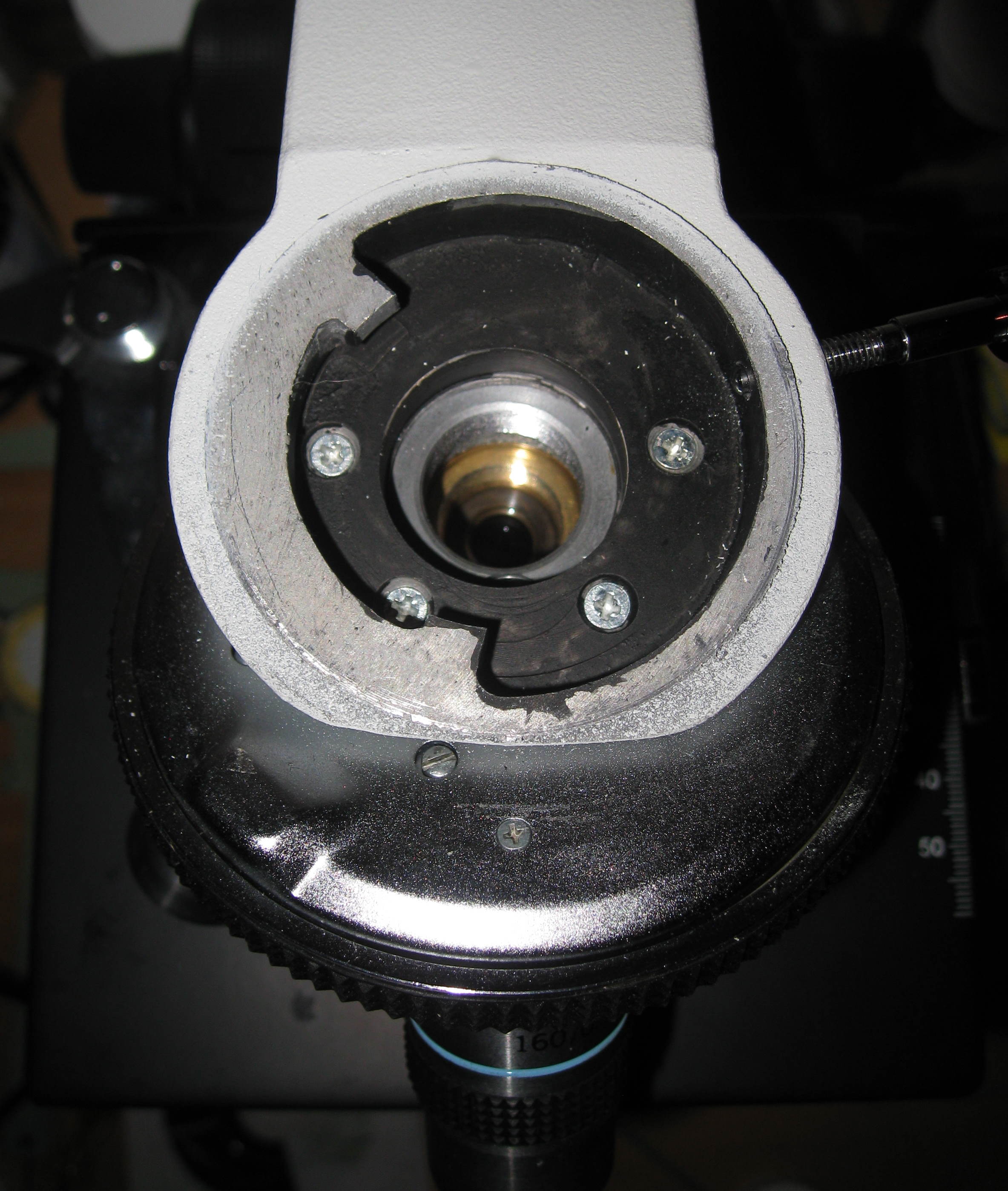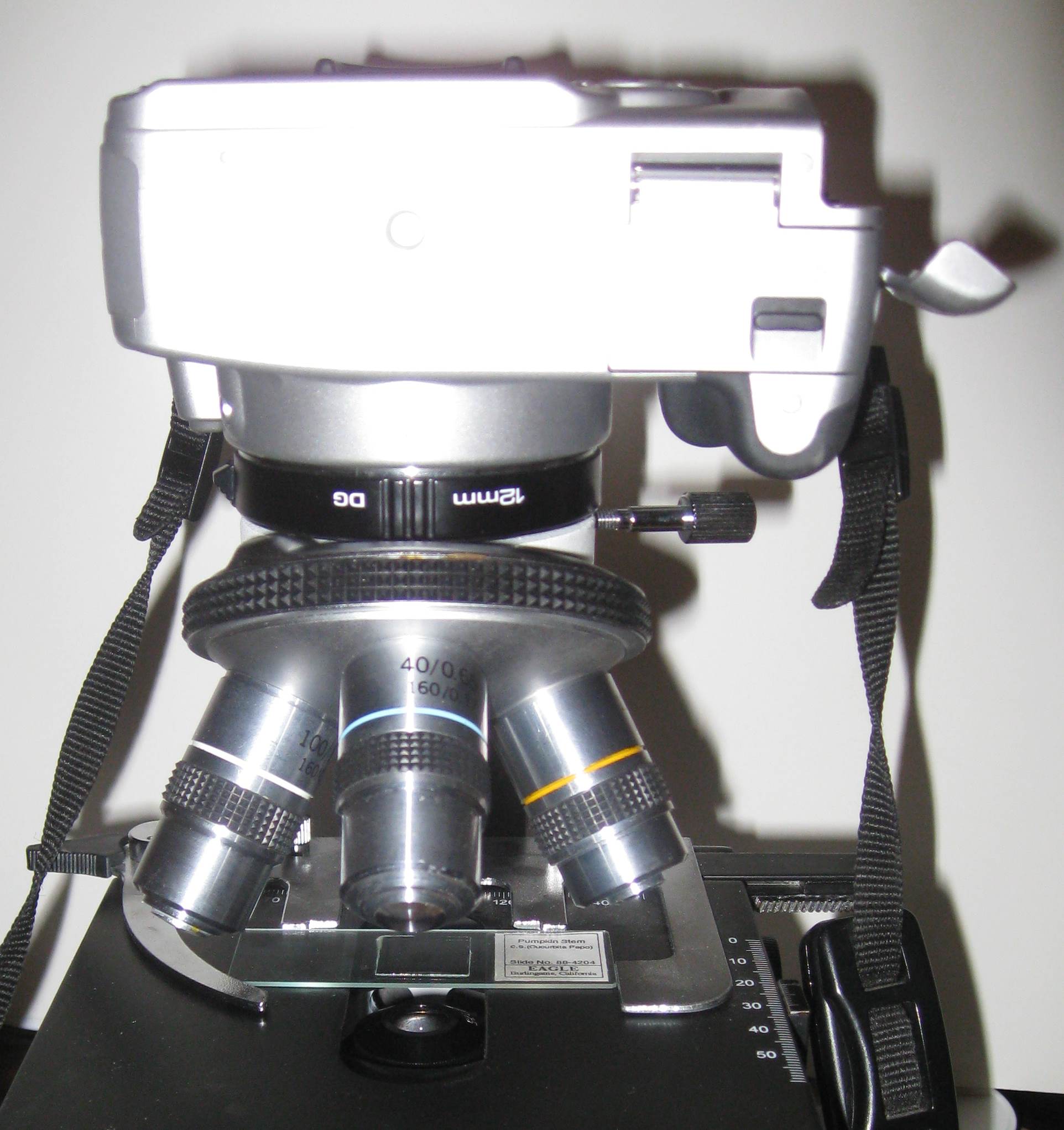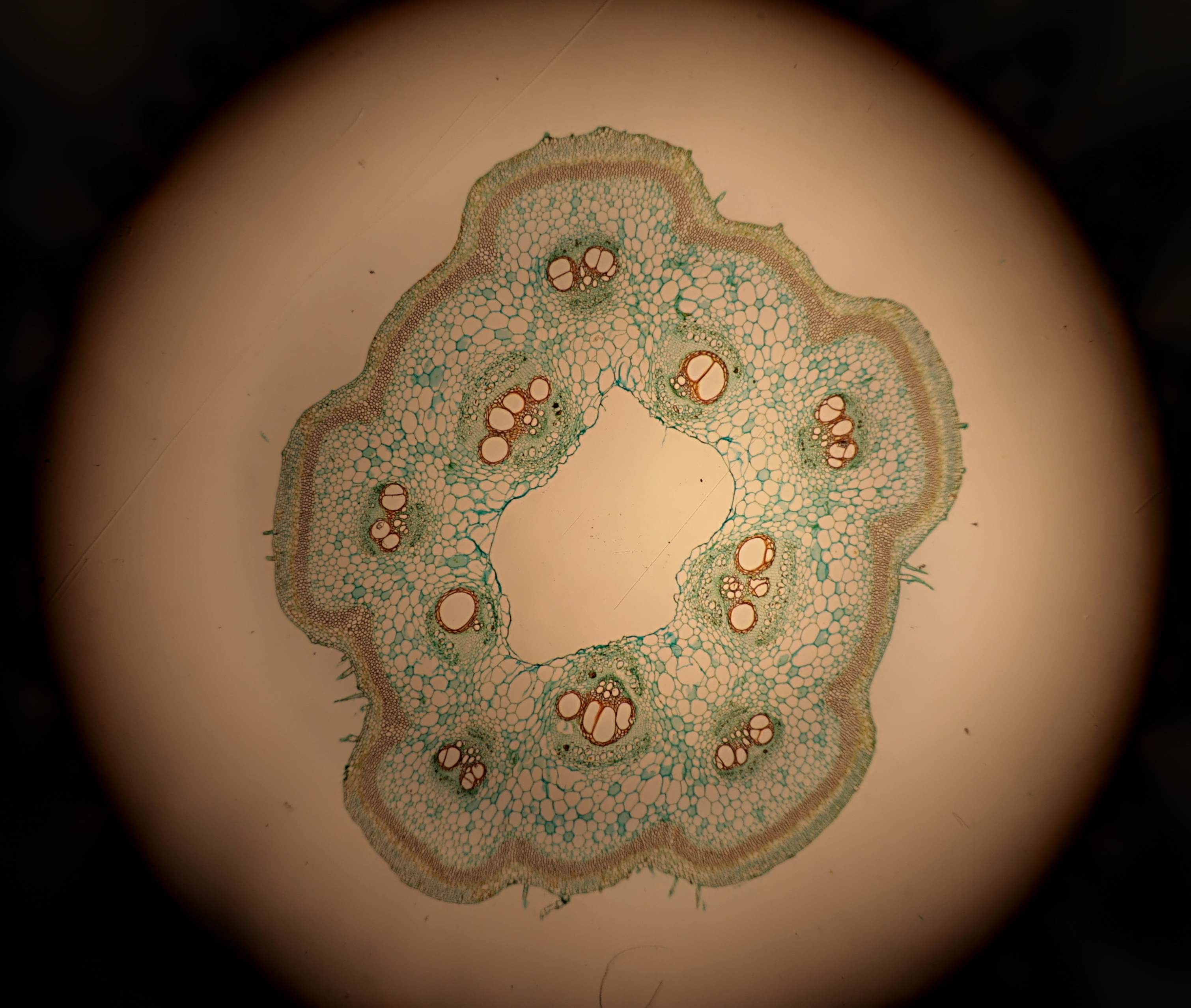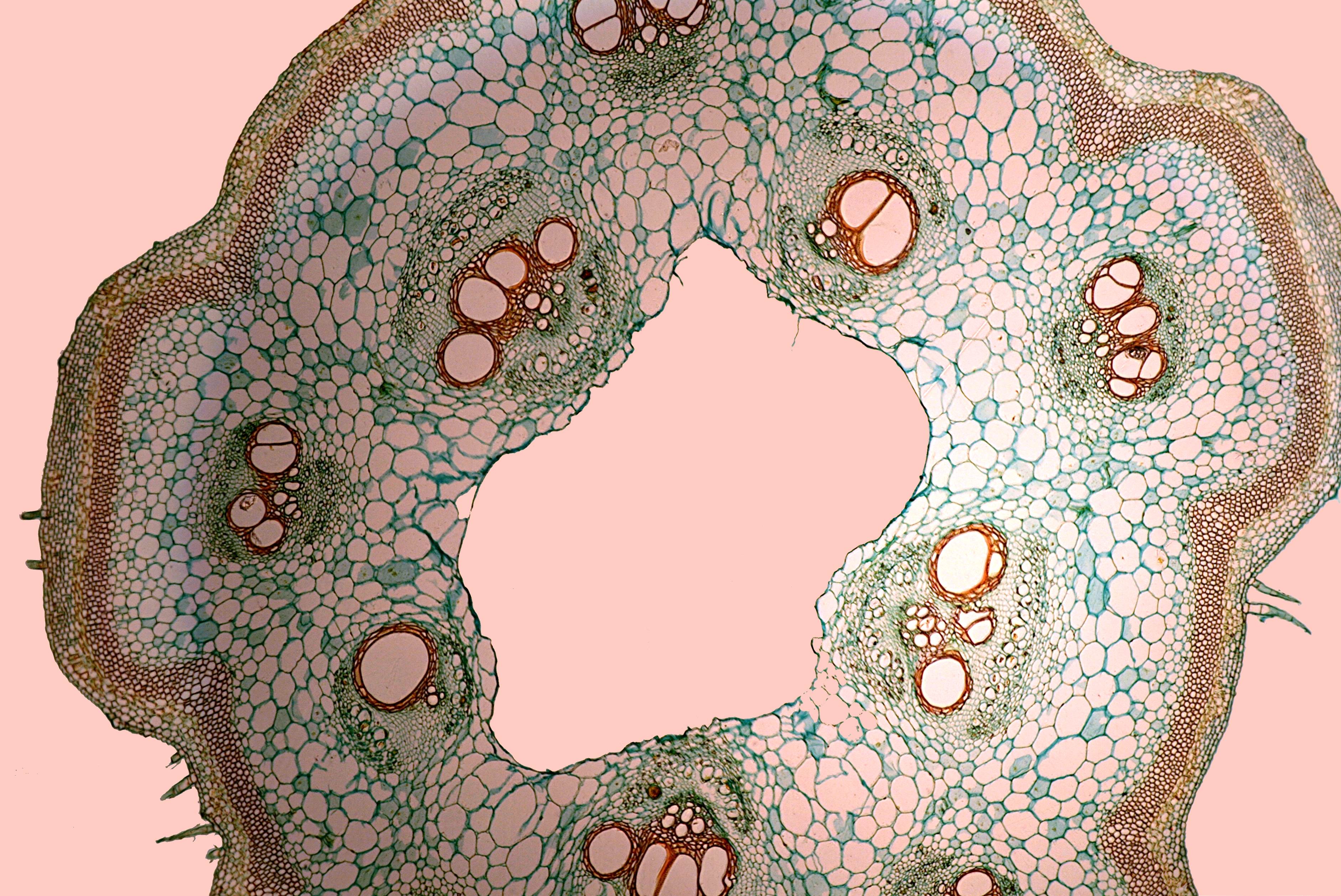Photography through the microscope eyepiece is fairly easy to do, and can be done with inexpensive cameras. But all that glass (the eyepiece lenses and the camera lens) limits what we can see well, and dirt on the eyepiece lens is very apparent. All of the imperfections in the lenses add up.
If we could remove the eyepiece and the camera lens, and have the objective lens project an image directly on the camera sensor, we can do better.
Expensive objectives that correct many flaws (apochromatic PLAN lenses) do some of the final corrections in the eyepiece, so we will be losing those fixes. But losing the camera lens frees us from other imperfections, and we get some nice photos.
Removing the binocular eyepiece assembly on most microscopes is a simple matter of unscrewing one or two retention screws and lifting it off.
(Click on any image to get a larger version.)
Now we can see down into the microscope through the objective lens.
A digital single lens reflex camera (called a DSLR for short), has the nice feature that the lenses can be removed and swapped for other lenses for different tasks. In our current case, we are going to swap the lens for a simple tube, called an extension tube.
Extension tubes are usually used to move the lens farther away from the sensor. This changes where the lens focuses, allowing the photographer to take pictures closer to the subject. The result is a magnified view. They perform the same function when used in microphotography. You can see one extension tube between the camera and the microscope in the picture above. I use one small tube because the flash extends too far away from the body for it to sit flat on the microscope without it.
Without any extension tubes, we see the circle of the objective lens, surrounded by black. This wastes many of the sensor's pixels, but it gives us a wide field of view.
Note that this is not an expensive PLAN objective with a totally flat field of view all the way to the edges of the image. We can see blurring as we get farther from the center.
By using extension tubes, we can zoom in on the center of the image, where more is in focus at once, and we use all of the sensor's pixels on the bright parts of the subject, instead of wasting them on the dark edges. Later I will explain how to get both a large field of view and keep everything in focus, while still avoiding the dark vignetting at the edges.
We get a pretty nice photo. If you don't have extension tubes for your camera, you can just use a piece of plastic pipe, since they are just tubes, after all, and with no lens, the camera doesn't need them to be fancy gadgets with electrical contacts to connect the lens to the camera.





